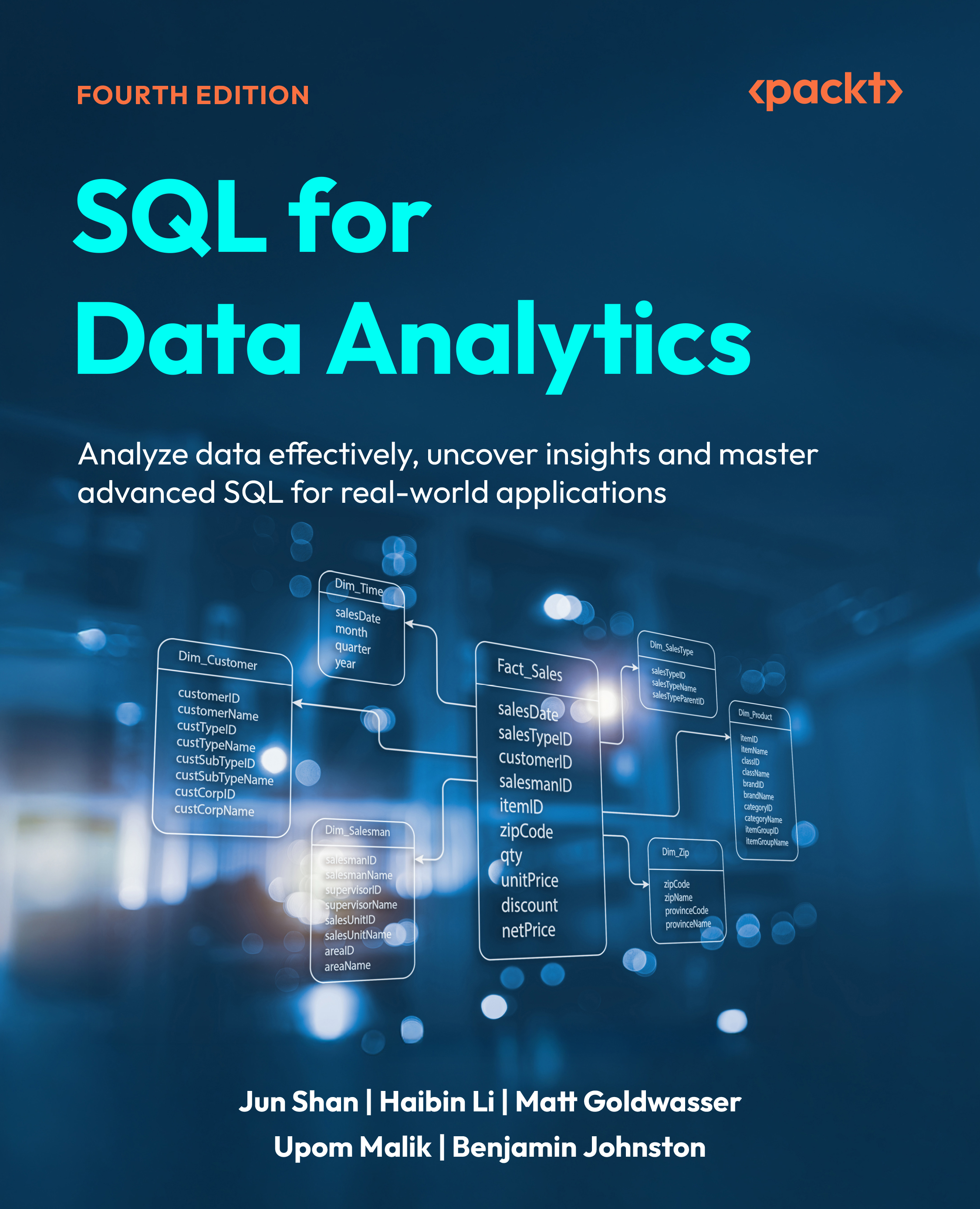Processing JSON and Arrays
You have already seen two different ways of recording data in Chapter 1, using the JavaScript Object Notation (JSON) document model and using the relational model. You have also seen that JSON is a natural way of recording real-world data, but the relational model provides a much simpler approach for most use cases. That’s why all the data processing you have learned about so far is SQL statements, which only handle relational data.
It must be pointed out, however, that JSON is still a convenient way of describing real-world issues. As such, modern SQL does support complex data structures such as JSON and arrays. These data structures are a natural way of data description and show up constantly in technology applications. Being able to use them in a database makes it easier to perform many kinds of analysis work.
The following topics are covered in this chapter:
- Understanding types of data
- Using JSON
- Using arrays ...

































































